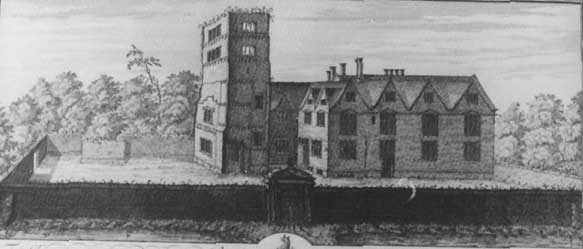 |
 |
The Castle probably
originated as a Saxon Fortress. There is also evidence that the area was attacked by Danish
invaders in the 10th Century, and of course, the nearby Roman roads and burial grounds shew
these invaders came here in even earlier times.
Immediately after his conquest of Britain in 1066, William I divided most of England
between his Norman followers. In return, the barons were required to defend their new
lands and to fight for the king whenever their forces were needed. William built motte and
bailey castles in strategic centres such as Cambridge and Huntingdon, as did some of his
most powerful supporters. Many of these simple earth and timber constructions became
centres for the collection of taxes, enforcement of justice and the many other
administrative tasks needed to manage a feudal estate in the Middle Ages.
As mentioned above, Camps Castle was part of a large estate given to Aubrey de Vere. When
De Vere took over the lands which included Castle Camps & Nosterfield, Abingdon & Hildersham,
Ashley & Silverley, Wilbram, and Saxton Street, he chose Castle Camps as the site for his
Castle, being mid-way between his chief seat at Castle Hedingham (and there is evidence
to suggest an underground tunnel connected the two Castles), and Cambridge, on the N.W.
slopes of the Eastern Ridge. It was held by his family, the Earls of Oxford, for over 500
years (apart from short periods when it was forfeited or seized; for example by Richard III).
No warfare was recorded here although justices of the peace were driven away by force of
arms in 1526, during quarrels between a dowager countess and the new earl. It seems that
Camps Castle was used mainly as an administrative centre for the many Cambridgeshire
estates of the de Vere family.
As mentioned, the family seat was Castle Hedingham, Essex, where the castle was far more
magnificent although the motte is a similar size. Castle Camps estate, used as a residence
by the earls included a large enclosed park, windmill and fishery.
In the late 15th Century
there was a four storey brick tower attached to a large house. The house was rebuilt in
the late 16th Century.
This house fell down about 1738, when Charterhouse constructed a smaller farmhouse, facing
North, incorporating a fragment of the earlier building in the back wing. The only remains
of the Norman Castle which remain above ground is a piece of rubble in the yard to the South
of the present farmhouse.
Charterhouse built a 'very noble house' out of the ruins, and when visited in June 1744 it
was reported that not long before, when digging in a cellar at the East end of the house,
many coffins and bones were found, which led to the supposition that the cellar had been a
vault. Also in the cellar were found a blocked-up arch, said to have led to the tunnel, and
a 16th Century chimney.
In the 1740s Castle Farm was divided between the rebuilt farmhouse at the Castle, and the
new Moat Farm. Most of the 16th Century wall around the farmhouse still stands today, but
Sir James Reynolds had the gate-way pulled down as it was not wide enough for his coach to
pass through.
About this time a sketch was made of the Castle by S H Buck, dated 1730.
Between 1941 and 1945 a large part of the land of Castle Farm and Moat Farm became a (very
windy) airfield, a satelite to Debden.
The Mosquito planes joined the first Squadron of its type on 26th January 1942. In 1944 the
Griffin Spitfires came to Castle Camps, and the Canadian 419 Squadron was based here during
the first few months of 1944.
In mid-1945 the famed 85 Squadron returned, and six of its Mosquito night fighters escorted
Prime Minister Winston Churchill to the Potsdam Conference.
The Airfield closed in 1946 and the land was sold 1963-1966. Some
of the old runways remain as farm roads.
This List was last updated on 15th November 2000.
The number of
people who've looked at this page so far is: